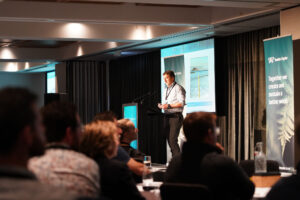NZ Society for Earthquake Engineering (NZSEE) Conference 2021 Christchurch
The Seismic Assessment of Existing Buildings, Technical Guidelines for Engineering Assessments (“the Guidelines”) provides engineers with a consistent means to assess the seismic behaviour of existing buildings with respect to life safety. The expectation for a new building designed in accordance with current good practice is that it should be able to sustain in excess of 1.5-2 times the ULS displacement while still achieving its life-safety objectives. Show more…This same expectation is transferred to the assessment of existing buildings with ULS scaled to reflect the %NBS rating attained. To achieve this expectation in the evaluation of the effects of geotechnical aspects on existing building behaviour the Guidelines require that the behaviour of the soils under ever increasing levels of seismic shaking be considered. However, when this behaviour is expected to lead to a rapid deterioration in the soil resistance available (referred to as a step change), the capacity of the soil is required to be limited to half of either the deformation or the level of shaking at which the deterioration is estimated to occur. Within the Guidelines, geotechnical Severe Structural Weakness provisions have prescriptive requirements for certain types of buildings, but the geotechnical step change provisions are open to interpretation, particularly when considering the impact on the supported structures. This paper will provide commentary on the intent and application of the geotechnical step change provisions and will present practical examples taken from real-world projects. Show less…




















